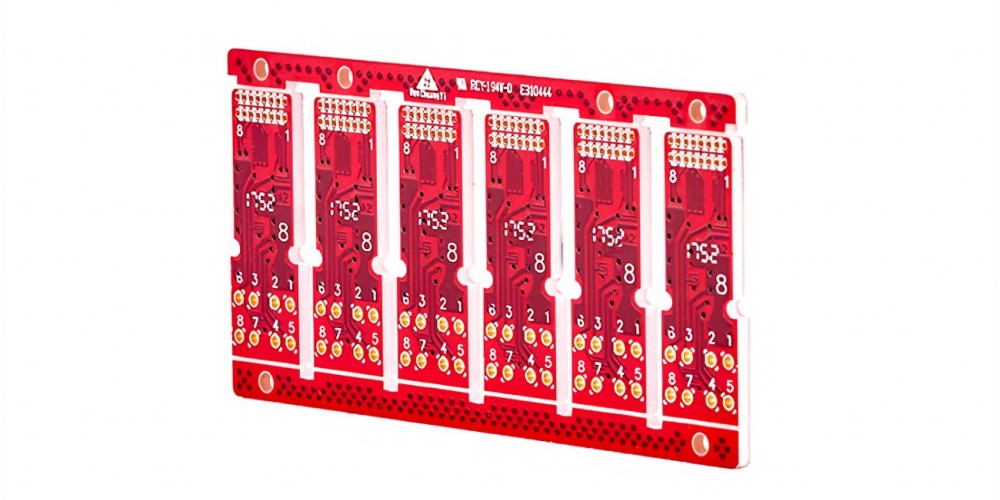What are MMCX Connectors?
MMCX (micro-miniature coaxial) connectors are a type of RF coaxial connector often used in wireless communications devices like Bluetooth modules, WiFi cards, GPS receivers etc. They are valued for their small size, durability and high frequency performance.
Some key features of MMCX connectors:
- Compact size – diameter around 3-4mm
- Locking mechanism prevents accidental disconnection
- High frequency range – up to 6 GHz typically
- Low VSWR across operating bandwidth
- Variety of termination styles – surface mount, edge mount, cable mount
Benefits of Using MMCX Connectors on PCBs
Here are some of the benefits of using MMCX connectors for RF interfaces on printed circuit boards:
- Space saving – The small size helps minimize the footprint on crowded PCBs
- Replaceability – Modules using MMCX can be easily swapped out if needed
- Flexibility – Cables allow positioning modules away from the main PCB
- Reliability – Locking mechanism provides secure connectivity
- Performance – Designed to maintain impedance matching and low loss at high frequencies
Types of MMCX Connectors
There are a few common variations of MMCX connectors used on PCBs:
| Type | Description |
|---|---|
| Surface Mount | Soldered directly onto the PCB |
| Edge Mount | Secured to the edge of the PCB |
| Cable Mount | Attached to a coaxial cable |
| Board-to-Board | Allow interconnect between PCBs |
Surface mount and edge mount styles are commonly used for integrating wireless modules like WiFi cards or Bluetooth modems onto a PCB. Cable mount connectors can provide flexible attachments to external antennas or devices.
Design Considerations for MMCX on PCBs

Here are some important design factors to consider when utilizing MMCX on a PCB design:
- Impedance Control – Maintain a consistent 50-ohm impedance throughout the interface. Follow trace width/clearance guidelines.
- RF Layout – Minimize overall trace length. Avoid right angles. Ground plane layers help shield noise.
- Solder Pads – Use larger, rounded solder pads for good wetting to MMCX leads.
- Orientation – Position connectors for easiest cable attachment and strain relief.
- Grounding – Proper grounding of connector shield is critical for performance.
- Durability – Reinforce and support connectors if subject to vibration or frequent mating cycles.
Careful attention to these factors will help achieve reliable connectivity and maximum signal integrity for MMCX interfaces. Pre-certification of the connector on the PCB can help validate design.
Common Applications of MMCX Connectors on PCBs
Some typical applications where MMCX is used on printed circuit boards include:
- WiFi cards
- Bluetooth modules
- GPS receivers
- Radio transceivers
- RF test points
- Antenna connections
- Wireless IoT devices
- Handheld electronics
- Radio hardware
- Automotive electronics
The compact, high frequency capabilities make MMCX connectors ideal for integrating wireless functionality onto PCB designs across many industries.
Frequently Asked Questions
Q: What is the typical frequency range for MMCX connectors?
A: Most MMCX connectors can support up to 6 GHz, with some high frequency models rated up to 18 GHz. The common range is 500 MHz to 6 GHz.
Q: Can I solder MMCX connectors myself?
A: Yes, MMCX connectors can be hand soldered, but care should be taken to avoid overheating. Pre-tinning the solder pads can help create a good solder joint.
Q: Do MMCX connectors lock securely?
A: Yes, the snap-on locking mechanism helps prevent accidental disconnections while still allowing convenient disconnect when needed.
Q: Can I get right-angle MMCX connectors?
A: Yes, right angle surface mount or edge mount MMCX connectors are available when vertical mounting is needed.
Q: What are MMCX connectors made out of?
A: MMCX contacts are gold plated for conductivity while the outer casing is nickel-plated brass for durability and solderability. The insulator is typically PTFE or PEEK.

Leave a Reply